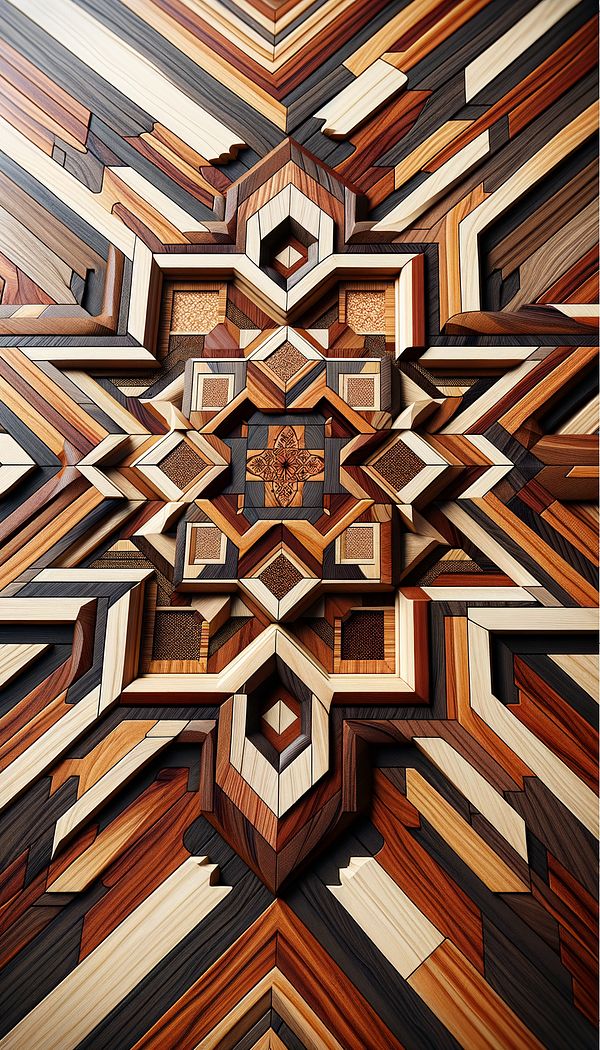What is an Inlay?
An inlay is a decorative technique that involves embedding pieces of one material into another to create patterns or designs.
Description
An inlay is a decorative technique used in various forms of craftsmanship, including woodworking, metalworking, and stonework. The process involves carefully embedding pieces of one material into cavities of another, creating intricate patterns, designs, or images that are flush with the surface. This technique allows for the addition of decorative elements without altering the structural integrity of the base material. The materials used for inlay work can vary widely, from wood, metal, and stone to precious gems, mother-of-pearl, and bone.
The allure of inlay lies in its ability to highlight contrast and detail, bringing a unique aesthetic to furniture, flooring, walls, and smaller objects like jewelry boxes and musical instruments. Historically, inlay work has been a mark of fine craftsmanship and luxury, featuring in everything from ancient Egypt's furniture to the intricate marquetry of the Renaissance period.
In the context of interior design, inlay can add an element of bespoke beauty and sophistication to a space, whether through a stunning piece of furniture or a detailed architectural element. Choosing the right materials and patterns can complement the interior's overall design styles and theme, making inlay a versatile decorative technique.
Usage
In interior design, inlay is often seen in pieces of furniture such as tables, chairs, and cabinets, where wood is the primary material for inlay work. Additionally, it's used in flooring designs, particularly with hardwood or stone floors, to add decorative borders or centerpieces. Wall panels and door designs can also feature inlay work, incorporating materials like metal, stone, or even glass for more contemporary spaces. Jewelry boxes, picture frames, and other decorative objects might employ inlay to introduce intricate patterns and detail to the space.
FAQs
-
Can inlay work be done on any material?
Inlay work is most commonly done on wood, metal, and stone, but it can be applied to a wide range of materials, including glass, bone, and precious gems, depending on the desired effect and the skills of the craftsman.
-
Is inlay only used for traditional interior design styles?
No, inlay can be adapted to suit a wide range of design styles, from traditional to contemporary. The key is in selecting materials and patterns that complement the overall style of the space.
-
How durable is inlay work?
The durability of inlay work depends on the materials used and the craftsmanship. When properly executed and maintained, inlay can last for generations, contributing to the longevity and value of the piece.
Practical Application
When considering inlay for an interior design project, it's important to think about the overall aesthetic you're aiming for. Choose materials and patterns that complement the space and its existing elements. For furniture, consider inlay designs that add elegance without overwhelming the piece’s primary function. In flooring, subtle inlay patterns can create a luxurious feel underfoot. Always consult with skilled artisans or craftsmen who specialize in inlay work to ensure a high-quality result that fits seamlessly into your design vision.
-
Architectural Elements199 articles
-
Design Styles478 articles
-
Furniture Types599 articles
-
Decorative Techniques322 articles
-
Materials & Textiles360 articles
-
EmulsionEmulsion refers to a water-based paint with a smooth, matte finish.
-
TactilityTactility refers to the sensation and quality of touch in materials, textures, and objects within an interior space.
-
Hoop Back ChairA chair featuring a circular or hoop-shaped back frame that supports the backrest.
-
ChifforobeA chifforobe is a piece of furniture that combines a wardrobe with a chest of drawers.
-
ChiffonierA tall, narrow piece of furniture, often with drawers, used for storage.
